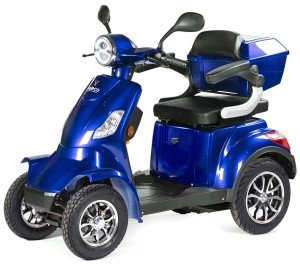Guide To Velco: The Intermediate Guide For Velco
페이지 정보

본문
Velcro: A Revolutionary Fastening Solution
Intro
Velcro, a name that has practically become synonymous with hook-and-loop fasteners, has actually revolutionized the method we consider attaching materials. Frequently a staple in different industries and families, Velcro offers a simple yet reliable service to secure items without the need for buckles, buttons, or zippers. This post explores the origins, mechanisms, applications, and advantages of Velcro as well as addressing some frequently asked concerns.
The Origins of Velcro
Velcro was created in the late 1940s by Swiss engineer George de Mestral. After a searching journey in the Alps, Mestral ended up being captivated by the burrs that stayed with his pet dog's fur. Upon closer examination, he understood they operated through a system of small hooks that captured anything with a loop, including material and fur. Recognizing the capacity of this natural attachment mechanism, Mestral embarked on a journey to recreate it in a synthetic form. By 1955, he had actually patented his innovation, branding it "Velcro," a combination of the French words "velours" (velour) and "crochet" (hook).
How Velcro Works
Velcro consists of 2 separate pieces: a hook side and a loop side. These two components interlock when pushed together, developing a strong bond that can be quickly released with an easy pull. The performance of Velcro can be broken down into these main elements:
| Component | Description |
|---|---|
| Hook Side | This side features tiny hooks that catch and hold onto loops. |
| Loop Side | This side includes soft loops created to accept hooks when called. |
System of Fastening
- Interlocking: The hooks on one side catch the loops on the other, developing a physical interlock.
- Strength: The number of hooks and loops ensures a considerable holding strength, making it appropriate for both light and sturdy applications.
- Reduce of Use: Velcro can be disengaged and re-engaged various times without losing its effectiveness, setting it apart from more traditional fastening methods.
Applications of Velcro
Velcro has actually found application throughout a myriad of sectors, including:

Fashion Industry
- Sportswear
- Shoes (particularly kids's shoes)
- Accessories (belts, bags)
Medical Field
- Orthopedic gadgets
- Plasters
- Prosthetics
Automotive and Aerospace
- Seat covers
- Interior linings
- Security equipment
Household Items
- Drapes
- Rugs
- Organizers
Industrial Use
- Cabling
- Devices securing
- Tools storage
Benefits of Velcro
The popularity of Velcro can be credited to numerous benefits it provides over conventional attaching approaches:
- Quick and Easy to Use: No tools are needed, making it easy to use.
- Flexible: Works on numerous surface areas and products.
- Adjustable: Allows for simple modification in size (e.g., straps).
- Resilient: Holds up under recurring use.
- Washable: Maintains its function even after cleaning.
Prospective Drawbacks
While Velcro is helpful in lots of contexts, there are some limitations to be familiar with:
- Noise: The noise of Velcro being pulled apart can be loud in peaceful settings.
- Wear and Tear: Over time, Velco extreme use might result in fraying or reduced effectiveness.
- Limitations with Heavy Loads: While it can hold significant weight, it may not be appropriate for very heavy products.
Frequently asked questions about Velcro
1. Is Velcro water resistant?
Yes, Velcro can be made from waterproof products, making it suitable for outdoor and marine applications.
2. Can Velcro be reused?
Definitely! Velcro is developed for repeated use, and lots of products can be resealed and opened several times.
3. How do you tidy Velcro?
Cleaning up Velcro is basic. You can utilize a lint roller or a soft brush to get rid of particles. For stubborn dirt, it might be rinsed gently with water.
4. Is Velcro strong enough to replace zippers?
In numerous applications, yes, Velcro can effectively change zippers, velobike mobility Scooters especially in circumstances where quick fastening and loosening are needed.
5. Are there various kinds of Velcro?
Yes, there are many types, including differing widths, colors, adhesive strengths, and products developed for various applications (i.e., high-temperature, outside, and so on).
Velcro has actually shown to be a flexible and ingenious fastening solution that has infiltrated multiple sectors, enriching both daily life and commercial applications. Its capability to provide a trustworthy and easy-to-use method of securing makes it an enduring component of modern-day style. From casual garments to advanced medical applications, Velcro continues to support its track record as a staple fastening approach for numerous usages. Whether it's for Zt16 Velo Mobility Scooter Scooter Veleco; millardfocks.top, the style enthusiast or an expert in the medical field, Velcro stays an unrecognized hero worldwide of fastening innovation.
By revolutionizing how we link and secure items, Velcro is a testament to the power of ingenious thinking and simplicity in design. As innovation progresses, we can just prepare for even more innovative applications for this impressive creation in the future.
- 이전글Buy Euro Counterfeit Money 101:"The Complete" Guide For Beginners 25.08.22
- 다음글You'll Never Guess This 45ft Sea Containers's Tricks 25.08.22
댓글목록
등록된 댓글이 없습니다.

